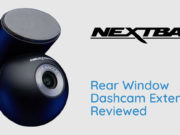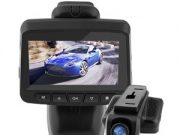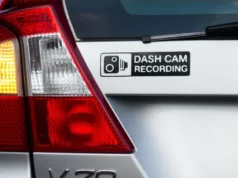You have just had an accident, and you’re reviewing footage to get a hold of the license plate of that hit and run vehicle, but to your dismay, the footage is not clear or visible.
It’s a scenario that most dashcam buyers get themselves in because of little or no research about dashcam image quality as a feature to consider before purchasing a dashcam.
According to research done by Ritsumeikan University on image quality, they found that the quality of images degrades due to lossy compression, which affects the under-mentioned features.
So when looking to purchase a dashcam, the main features to look out for on image quality are; resolution, the field-of-view, frame rate, night vision, and low light conditions.
1. Resolution
Regarding image and video, it’s the amount of detail in a snap. The resolution of a camera is always expressed by how many vertical pixels are in an image. Categorising pixels is done from as low as 144p to as high as 2160p, meaning an image with 720p has 720 pixels vertically.
One may ask, what is the best pixel to consider when checking on resolution? From our expert view, the answer is, an entry level dashcam should be 720p or higher but always remember the more the pixels (e.g., 4K), the better the clarity of images and video recordings.
2. Field of View
Any part of the recording visible through the camera at a particular position and orientation is considered field-of-view. The feature is simply how wide the dash camera can see.
Dashcam manufacturers always incorporate field-of-view differently since there is no standard regarding the field-of-view feature. So, before purchasing a dashcam, it is good to find a sample image or recording of the dashcam to know whether it has a narrow field-of-view or wide field-of-view. Something to note is that a wide field of view dash camera has affected image quality due to stretching out of pixels.
This is sometimes expressed as X degree lens.
3. Frame rate
The best way to understand this is by describing frame rate as the value at which images are captured and displayed by a camera. The minimum frame rate for dash cameras is 30 frames per second (fps), and it offers quality video footage.
You may want to know whether there are higher frame rates, and the answer is yes. Some dash cameras have up to 60 fps, and they give very smooth video footage, but the downside is that they take up a lot of space, leading you to buy new Micro SD cards more frequently.
Modern dashcams that utilize 60 fps connect to online storage via 4G or 5G data sims, so storage is not that much of a setback anymore. These are referred to as live video streaming dashcams.
4. Night vision and low light conditions
The environment and region you drive in are essential to check. Most dashcam buyers must consider whether they drive at night a lot or are in locations and areas that experience less sunshine or incredibly long winters.
The best dash cam is the one that supports night vision and captures high-resolution images even under low light conditions. Images captured under such conditions are not colourful as the images captured during daytime. Still, they are always clear for review in an incident or accident if you did consider a dashcam with a night vision feature.
Remember, an accident or incident takes seconds to happen, so the chance to capture that is just one














